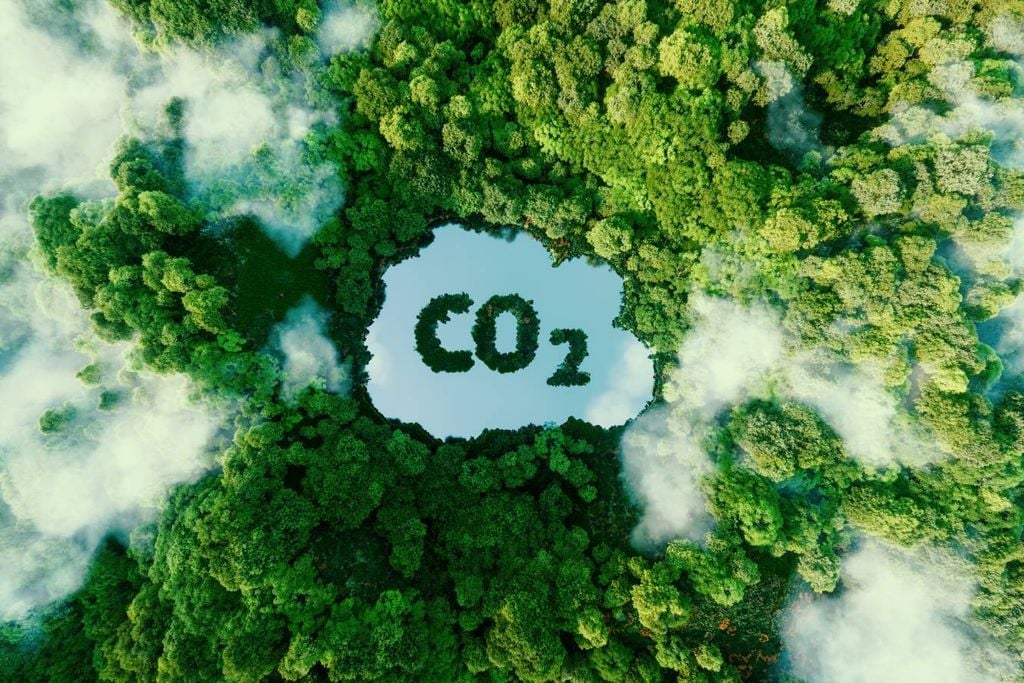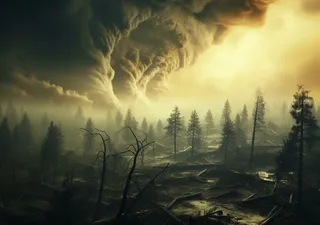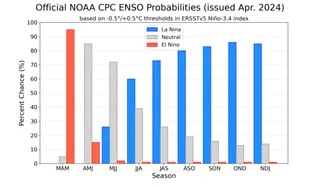Carbon Dioxide Levels Are At The Highest They Have Been In Millions Of Years, And They Are Still Rising
Concentrations of carbon dioxide in the atmosphere have increased every year since measurements began back in 1958, and it looks like they won’t decrease any time soon due to human activity.

This year saw the largest ever recorded jump in the amount of carbon dioxide in the atmosphere. Carbon dioxide concentrations in March of 2024 are 4.7 parts per million higher than they were in March of 2023. This is a record breaking level of carbon dioxide levels in a single year.
Up, Up and Away
Carbon dioxide levels are seeing an increase recently due to the El Niño event along with the increasing amounts of greenhouse gasses in the atmosphere from the burning of fossil fuels and deforestation. According to Ralph Keeling, director of the CO2 program at UC San Diego’s Scripps Institution of Oceanography, the increase in the last 4 months so far this year is also a record. We are also breaking records in how fast the record is rising, not just in the amount of carbon dioxide concentrations.
Measurements of carbon dioxide concentrations began in 1958 in Mauna Loa, Hawaii by Charles Keeling. Each year since these records began, carbon dioxide concentrations have increased. The gas accumulates due to rampant emissions from power plants, vehicles and other sources. 2023 was the year of the new global record in annual emissions.
427.48 parts per million (ppm) CO2 in air
— Keeling_Curve (@Keeling_curve) May 10, 2024
09-May-2024 https://t.co/kUgI1WtcZU
In June of 2023, NOAA announced that global concentrations of carbon dioxide hit 421 ppm, a 50% increase since pre-industrial times. This makes it the highest in millions of years. The latest reading from Mauna Loa this year shows 427 ppm of carbon dioxide.
Have We Been Here Before?
For almost 6,000 years of human civilization, carbon dioxide levels were around 280 ppm. These levels were before humans began dispelling large amounts of carbon dioxide in the atmosphere through fossil fuel burning. The rapid increase of carbon dioxide threatens the planet with a disastrous climate breakdown of severe heat waves, floods, wildfires and droughts.
The last time carbon dioxide levels were this high, research suggests, was 14 million years ago, and that climate would be foreign to humans today. 2016 was the last time there was an annual jump of carbon dioxide this high, which also happened to be during another El Niño event. El Niño events cause a temporary spike in global temperatures.
When El Niño events are over, there is typically a standard 2-3 ppm increase in carbon dioxide. The rate of rising will decrease, but overall, carbon dioxide concentrations are still rising. In order to stabilize our climate, carbon dioxide levels have to decrease, which is not currently happening.







